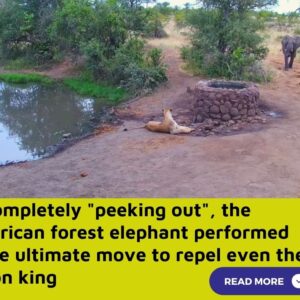Dubbed the “world’s loneliest lion”, Ruben completed a journey of more than 8,300km to return to his hometown of South Africa and took his first step into the natural world.
The 15-year-old male lion named Ruben became known to the world when the border conflict between Armenia and Azerbaijan took place in mid-2018, causing the zoo where Ruben was living to be closed. This is a private zoo located in Armenia, near the Azerbaijan border.
While other animals at the zoo were moved elsewhere, Ruben still had to stay at this zoo because there were no cages to transport him. The animal was kept in a cramped cage with extremely poor conditions at the zoo. An employee is assigned to care for the animal.
 Ruben had to live in a poor environment and cramped cage for 5 years before being rescued (Photo: ADI).
Ruben had to live in a poor environment and cramped cage for 5 years before being rescued (Photo: ADI).
Faced with Ruben’s tragic situation, Animal Protection International (ADI) – a non-profit animal protection organization – launched a campaign to rescue this male lion.
ADI experts said that when they arrived at the zoo where Ruben was cared for, the animal was in poor health due to malnutrition and lack of exercise. This animal lives so alone that it has forgotten how to roar and act to show the bravery of the “lords of the steppe”.
By last June, ADI had achieved the first step in the rescue process, successfully removing Ruben from the cramped cage and transferring the animal to care at a bear sanctuary in Armenia. ADI’s next goal is to bring Ruben back to his home country of South Africa.
“We hope to soon receive approval for the application and exit documents to bring Ruben back to his home country of South Africa,” Tim Phillips, co-founder and Vice President of ADI, said in a response. Interview in March.
Recently, ADI’s efforts paid off when Ruben made a journey of more than 8,300km, from Armenia to South Africa. Ruben was anesthetized and placed in an iron cage, transported by plane to South Africa.
 Ruben took his first step in his home country of South Africa after many years (Photo: ADI).
Ruben took his first step in his home country of South Africa after many years (Photo: ADI).
Qatar Airways Cargo assisted ADI in transporting Ruben, as the airline provided a cargo aircraft with a cargo door large enough to transport Ruben’s stable.
After a journey of more than 8,300km, Ruben was transferred to South Africa’s Free State nature reserve. The animal recovered very quickly after the long trip and easily got used to the new living environment.
“Lions are sociable big cats that live in groups in the wild. So Ruben’s inability to contact or communicate with other lions is definitely a terrible thing,” Jan Creamer, ADI President, said.
“The first time we saw Ruben walking on the grass, with the African sun on his back, we all shed tears,” Jan Creamer added. “The animal’s attitude has improved a lot, it has become relaxed and is no longer afraid.”
The “loneliest lion in the world” and the 8,300km journey back to his homeland (Video: ADI).
Ruben is now able to regain his roar and get to know the other lions in the Free State reserve. Ruben will continue to have his health condition monitored by ADI experts to ensure the animal can adapt to the new living environment and in case Ruben is shunned by other lions in the reserve.
Normally, the lifespan of male lions in the natural world is from 15 to 16 years, while for female lions it is from 8 to 10 years. The lifespan of lions in captivity is significantly longer, up to 20 years, due to good care and no need to waste energy on hunting.
A male lion named Arjun is recorded as the longest-living lion in the world, with a lifespan of up to 29 years. Arjun was born and cared for at the Indian Wildlife Rescue Center, having never lived a day outside the natural world.
Arjun died on May 17, 2018. The cause of this lion’s death was multiple organ failure due to advanced age.
The male lion named Loonkito is recorded as the oldest male lion living in the wild. This animal lived in Amboseli National Park (Kenya), but was killed by herdsmen using spears when the animal entered the village to attack livestock and search for food. At the time of his death, Loonkito was 20 years old.




